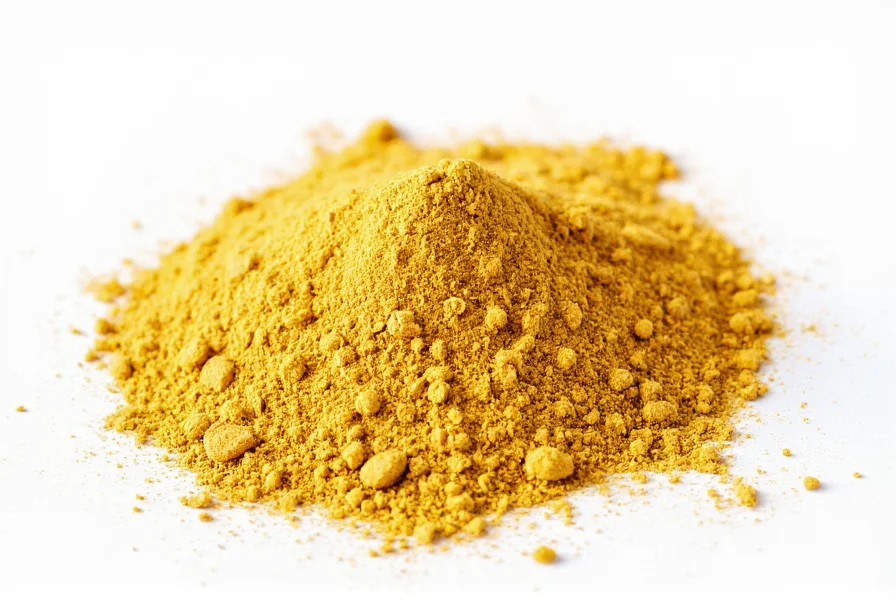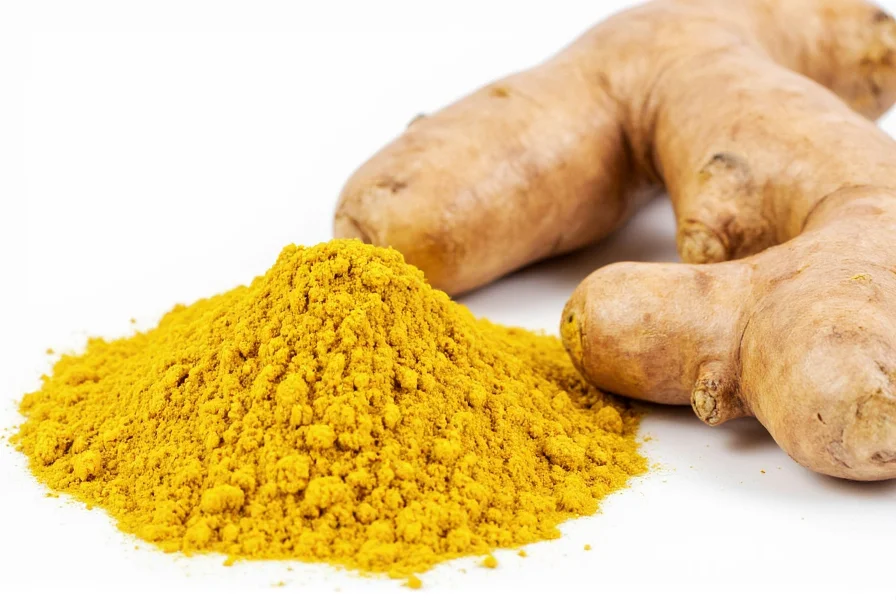Ginger powder, derived from dried and ground Zingiber officinale rhizomes, offers concentrated properties that make it valuable in culinary, medicinal, and industrial applications. Unlike fresh ginger, the powder form provides extended shelf stability while preserving key bioactive compounds through careful processing. This comprehensive analysis examines the scientific properties that define ginger powder's functionality and benefits.
Chemical Composition of Ginger Powder
The chemical profile of ginger powder determines its potency and applications. When ginger root undergoes dehydration and milling, certain compounds transform while others concentrate:
| Compound | Concentration in Powder | Significance |
|---|---|---|
| Gingerols (6-gingerol) | 3-8% | Primary anti-inflammatory and antioxidant compounds |
| Shogaols | 0.5-2% | Dehydration products of gingerols with enhanced bioavailability |
| Zingerone | 0.2-0.8% | Contributes to characteristic flavor and antioxidant activity |
| Volatile Oils | 1-3% | Contains zingiberene (35%), β-bisabolene (15%), responsible for aroma |
The dehydration process converts some gingerols to shogaols, which are more stable and demonstrate higher antioxidant capacity. This transformation explains why properly processed ginger powder maintains significant therapeutic properties despite the removal of moisture.

Nutritional Profile Comparison
When evaluating the nutritional value of dried ginger versus fresh, several key differences emerge. The concentration effect of dehydration significantly alters nutrient density per volume:
Per 100g serving, ginger powder contains approximately 317 calories, 9.9g protein, 9.6g fat, and 67.7g carbohydrates, with 21.6g dietary fiber. This compares to fresh ginger's 80 calories, 1.8g protein, 0.8g fat, and 17.8g carbohydrates with 2g fiber. The powder form concentrates micronutrients including magnesium (123mg vs 43mg), potassium (1397mg vs 415mg), and manganese (2.7mg vs 0.2mg).
The difference between fresh ginger and ginger powder extends beyond nutrient concentration. Powder loses some vitamin C content during drying (from 5mg/100g to 1.5mg/100g) but maintains nearly all polyphenols when processed below 60°C. This makes ginger powder particularly valuable for applications requiring extended shelf life without significant loss of bioactive compounds.
Physical Properties and Stability
Understanding the physical properties of ginger powder helps optimize its use in various applications. The powder typically has a particle size of 100-300 microns, with color ranging from pale yellow to deep golden depending on processing temperature. Higher drying temperatures produce darker powder with increased shogaol content but reduced gingerol levels.
Ginger powder demonstrates moderate water solubility (approximately 35g/100ml) and complete solubility in ethanol. Its hygroscopic nature means proper storage is essential to maintain quality. When stored in airtight containers away from light and moisture, ginger powder retains optimal properties for 24-36 months. Beyond this timeframe, gradual degradation of volatile compounds occurs, reducing both flavor intensity and therapeutic efficacy.
Medicinal Properties Supported by Research
The medicinal properties of ginger root powder have been extensively studied, with scientific evidence supporting several health benefits. Clinical trials demonstrate that ginger powder supplementation (typically 1-1.5g daily) significantly reduces nausea and vomiting, particularly in pregnancy and chemotherapy-induced cases.
Research published in the Journal of Medicinal Food confirms ginger powder's anti-inflammatory effects through inhibition of COX-2 and 5-LOX enzymes. This mechanism explains its effectiveness in reducing osteoarthritis pain, with studies showing 30% improvement in pain scores after 12 weeks of supplementation. The ginger powder antioxidant content (ORAC value of 28,811 μmol TE/100g) contributes to cellular protection against oxidative stress.
Culinary Applications and Flavor Chemistry
The culinary properties of ginger powder differ from fresh ginger due to chemical transformations during drying. Powder delivers a warmer, more concentrated flavor profile with less citrus notes but enhanced spicy heat. When heated, ginger powder releases zingerone, which provides a sweeter, less pungent flavor than fresh ginger's gingerols.
Professional chefs note that 1/4 teaspoon of ginger powder generally substitutes for 1 tablespoon of fresh grated ginger, though this ratio varies by application. In baked goods, ginger powder distributes more evenly and provides consistent flavor throughout. In savory applications, adding powder early in cooking develops deeper flavor notes, while adding it later preserves brighter, spicier characteristics.
Storage Guidelines for Maximum Potency
Proper storage directly impacts the shelf life of ginger powder and retention of beneficial compounds. Light, heat, and moisture accelerate degradation of gingerols and volatile oils. For optimal preservation:
- Store in airtight glass or metal containers (plastic may absorb volatile compounds)
- Maintain temperature below 25°C (77°F)
- Keep away from direct light
- Include desiccant packets to control moisture
Under ideal conditions, ginger powder maintains 80% of its original gingerol content for 24 months. After 36 months, potency typically declines to 50-60% of initial levels. Consumers can test freshness by aroma intensity and taste - diminished spiciness and musty notes indicate degradation.
Quality Assessment Parameters
When evaluating ginger powder quality, consider these evidence-based parameters:
- Color uniformity - Consistent golden hue indicates proper processing
- Aroma intensity - Strong, characteristic scent suggests preserved volatile oils
- Powder fineness - 100-300 micron particle size ensures optimal solubility
- Moisture content - Should be below 8% to prevent microbial growth
- Foreign matter - High quality powder contains less than 1% impurities
Third-party tested products often provide gingerol content on labels, with premium grades containing 5% or higher. This specification directly correlates with therapeutic potential and flavor intensity.
Frequently Asked Questions
What are the key differences in chemical properties between fresh ginger and ginger powder?
Ginger powder contains higher concentrations of shogaols (0.5-2%) due to the dehydration process converting gingerols, while fresh ginger has higher gingerol content (3-6%). The powder form has reduced moisture (8-10% vs 80% in fresh) and vitamin C, but concentrates other compounds including fiber, minerals, and certain antioxidants. Volatile oil content decreases slightly in powder (1-3% vs 2-3% in fresh), altering the aroma profile.
How does the antioxidant capacity change when ginger becomes powder?
Properly processed ginger powder maintains or slightly increases antioxidant capacity compared to fresh ginger. The ORAC value rises from approximately 23,000 μmol TE/100g in fresh ginger to 28,811 μmol TE/100g in powder due to concentration effects. However, excessive heat during drying (above 60°C) can degrade some antioxidants. The transformation of gingerols to shogaols during dehydration creates compounds with enhanced free radical scavenging abilities.
What storage conditions best preserve ginger powder's medicinal properties?
To maximize retention of ginger powder's bioactive compounds, store in an airtight glass container away from light at temperatures below 25°C (77°F). Include a desiccant packet to maintain moisture content below 8%. Under these conditions, ginger powder preserves 80% of its original gingerol content for 24 months. Avoid plastic containers as they may absorb volatile compounds, and never store near heat sources like stoves which accelerate degradation of therapeutic compounds.
How do the anti-inflammatory properties of ginger powder compare to fresh ginger?
Ginger powder demonstrates comparable or slightly enhanced anti-inflammatory effects compared to fresh ginger due to the conversion of gingerols to shogaols during drying. Shogaols show 2-3 times greater inhibition of inflammatory enzymes like COX-2 and 5-LOX. Clinical studies indicate equivalent therapeutic doses (1-1.5g daily) for both forms, though powder provides more consistent dosing. The concentrated nature of powder means smaller volumes deliver equivalent bioactive compounds.











 浙公网安备
33010002000092号
浙公网安备
33010002000092号 浙B2-20120091-4
浙B2-20120091-4